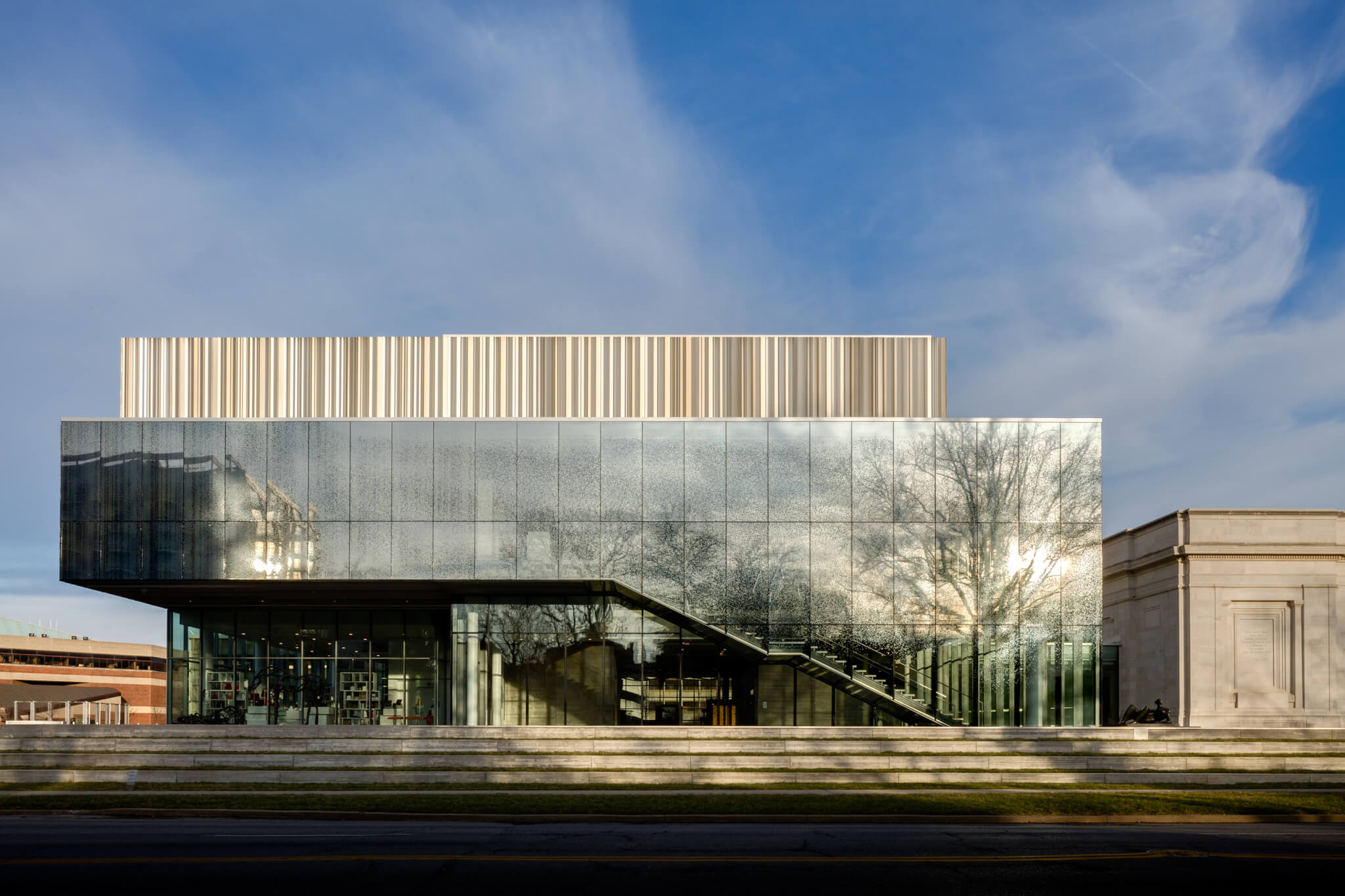Kulapat Yantrasast is the founder and creative director of wHY, an interdisciplinary architecture and design studio with offices in New York City and Los Angeles. While the practice engages in a wide range of typologies, from residences to master plans to experimental objects, it has developed a specialty in designing spaces for art and culture. For example, the firm is currently working on the Rockefeller Wing of the Metropolitan Museum of Art and the Northwest Coast Hall at the American Museum of Natural History.
Yantrasast will be giving the inaugural Larsen Lecture of the LongHouse Reserve at Christie’s in New York on March 15. Ahead of the event, Yantrasast shared his views on art and architecture with AN Editor in Chief Aaron Seward.


Aaron Seward: You studied architecture in Tokyo and worked for Tadao Ando before founding wHY in 2004. What are the main lessons you learned from Japanese architecture in general, and your time with Ando in particular, that you have incorporated into your own practice?
Kulapat Yantrasast: Thank you. What I learn from Japanese culture and architecture is the great balance of manmade objects—arts, cultures, and architecture—and nature itself. I learn perhaps the most from Japanese gardens and Japanese craftsmanship. The sense of invisible order and how to define experience for people within space. Katsura Imperial Villa is a great example.
What I learn from working closely with Tadao Ando is how the philosophy and principles of how one lives and works could be in concert and in action within the architecture one makes. How the thoughts about human spirit, nature, and uplifting experiences could be more than just talk, but constructed into architecture and spaces for people to experience and enjoy and learn from.
AS: One of your specialties is creating spaces for art. Art itself has become so heavily capitalized in recent years that people now speak of “the art market” as opposed to “the art world.” How do you reconcile the great wealth accumulated in art with the drive to create art spaces that are open and inclusive?
KY: That’s a very good point. When something gains value and importance in society, there is a tendency for some to quantify and make a profit advantage from it, like you said, art as well. Art has values and certain sectors are using these values as commodities for their business gains. However, despite this exploitation, art still maintains its power and values to people, and my work is to connect these intrinsic art values to human experiences, so people can enjoy, appreciate, and be inspired and delighted in their encounters with art. The spaces I make for art do not glorify mere possession of art objects, but I aim more to celebrate the presence of art and how these presences could be experienced and enjoyed personally by anyone, regardless of their knowledge of art. I sometimes think of myself as a matchmaker between art and people, I set the conditions so people are comfortable so they can be themselves and confident to explore the art presence in front of them.

AS: Since Gehry’s Guggenheim Museum in Bilbao, architecture itself has frequently been asked to become art, in the sense that it is often expected to draw crowds in the way that great artworks or art collections do, even when those works of art aren’t present. The results of this Bilbao effect have been mixed, if not disappointing. The magic, it seems, has not been repeated. In your view, should architecture for art be second to the collection or exceed it? Or is there a certain balance?
KY: Great architecture is a great shelter for people and also shelter for other art forms. There is great architecture that possesses unique iconic forms and spaces but also serves as a great environment for other arts to thrive. I believe in this solution. Our museums have iconic designs because museums serve as urban and cultural beacons of their communities, so they need to represent that symbol as well as be welcoming and empowering to everyone. The Speed Art Museum is a good example, we expanded the 1927 Beaux Arts building, which is opaque and intimidating to most people, by creating a welcoming and iconic new building in glass and metal. The balance of architecture as art and architecture as art environment must be considered.
Our project for the Rockefeller Wing at the Metropolitan Museum aims to create uplifting and inspiring spaces for the arts from Africa, Oceania, and the Americas. The spaces should not overwhelm the diverse art collections, but it needs to provide uplifting conditions for people to experience the arts and to invite people to look closely and think deeply about what they are seeing.


AS: On your website, you speak of a drive for cultural inclusivity and human flourishing. How can architecture best promote these outcomes?
KY: I believe the inclusivity of diverse cultures and voices in making a new integrated architecture is a critical issue of our times. The products could be inclusive and diverse only if the process of creation is fundamentally inclusive. I work by listening and being fully attentive to the voices and needs of people and communities that architecture serves. By defining the vision, program, and activities of the building with full integration of the community’s diverse needs, we could use our design skills to make these into a complex diverse whole.
I think architecture, like food or clothes, is an art form that gains the most potential via the use and meaningful engagement with people. Food nourishes, clothes celebrate, and architecture shelters people both physically and spiritually. It is within architecture’s basic goals to shelter people and enable their lives to flourish. Architecture can do that in multiple ways, from physical accommodation of human needs, comfort, the need to connect with oneself, the need to gather, the need to connect to one another. Architecture has so much power to enhance these qualities people need.
But in another aspect, architecture should also empower people to contemplate, to be confident to envision their future and thrive. This can be done through spaces, making a place that uplifts the spirit and encourages people to pay attention to their presence and their journey.



